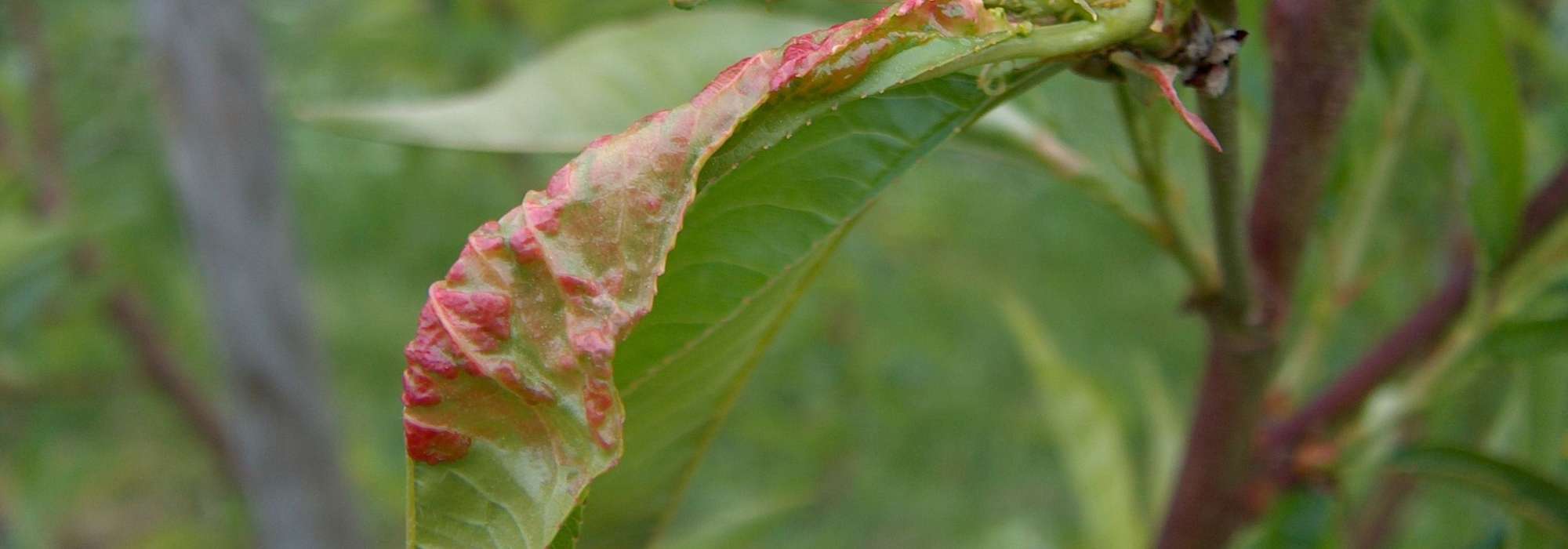
Peach leaf curl
Prevent and treat this disease
Contents
Very common on nectarine and peach trees, peach leaf curl is caused by a fungus that appears notably after a cool, wet spring. From March, leaves thicken, become blistered, curl and then turn orange-red in June while becoming covered with a white, felt-like coating. They eventually fall prematurely, causing weakening of the tree.
It is not possible to cure tree once disease is established but it can be treated preventatively against leaf curl by various methods.
Which species are sensitive?
Peach, clingstone peach and nectarine trees are the three fruit trees most commonly affected by the fungus Taphrina deformans, but rare cases have been reported on almond trees.
How to recognise peach leaf curl?
Monitoring should be carried out between May and August to guard against any attack.
Peach leaf curl can appear on young spring shoots as a deformation of the lamina that thickens and takes on a blistered appearance. Leaves curl and turn yellowish then reddish-violet before dropping.
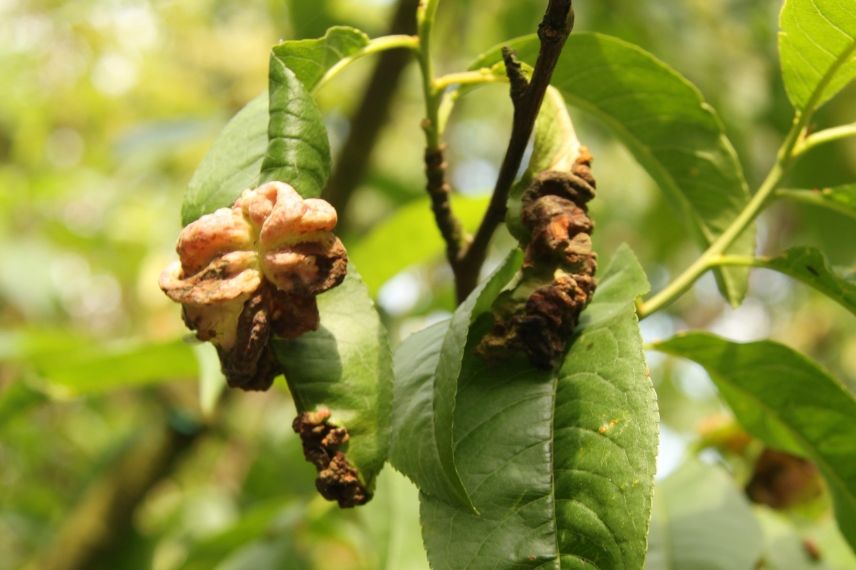
Leaf deformation
Depending on date of attack, impact on plant differs :
- If, late March, first leaves emerging from bud wither quickly, tree already exhausted by flowering will be severely weakened and has no choice but to draw on reserves to produce new shoots capable of carrying out photosynthesis. Internode length is reduced and repeated attacks weaken tree which becomes more susceptible to other aggressions. Needless to say harvest of peaches is seriously affected.
- If attack occurs late April – May, only part of laminae become blistered and generally tree sheds them and regrows healthy foliage during summer, without serious consequences for tree. However lfruits can become deformed then covered with a grey-brown felt-like coating.
In severe attacks or in particularly susceptible varieties, not only do leaves drop but young shoots deform and twist until they exude gum which signals that tree is defending itself but at the expense of its energy.
Risk of confusion :
Discolouration and deformities of buds can be due to deficiencies in various trace elements but leaf curling associated with swelling of fruits remain distinctive symptoms of peach leaf curl.
Discover other Peach and Nectarine trees
View all →Available in 1 sizes
Available in 1 sizes
Available in 1 sizes
Available in 1 sizes
Available in 4 sizes
Available in 1 sizes
Available in 1 sizes
Available in 2 sizes
Available in 1 sizes
Available in 1 sizes
Factors favouring peach leaf curl
Tree sensitivity to peach leaf curl ranges from ‘green tip’ stage, when woody buds begin to open, to ‘spreading leaves’ stage and only during rain and when temperatures exceed 7°C.
Some factors are particularly favourable to development of peach leaf curl:
- A mild, wet winter favours survival of fungus spores under bark, between bud scales and on soil surface, whereas severe frost helps eradicate them.
- Subsequently, a cool, wet spring (10 mm rainfall/24 h and temperatures between 10 and 20°C) promotes spore germination. Conversely, germination is nil when temperatures are below 8°C or above 30°C.
Read also
Codling moth on fruit treesControl and treatment of peach leaf curl
To prevent establishment or reduce consequences of peach leaf curl, you can :
- strengthen overall tree vigour by adding regular applications of compost or composted manure around its base in autumn ;
- remove shoots bearing cankers (wrinkled, with torn bark) and burn them to avoid spreading remaining spores ;
- apply two copper treatments (copper hydroxide) per year: in spring and in autumn. The fungus overwinters under the scales of the buds, so a copper treatment of shoots will inhibit spore germination. It is recommended before bud swelling in spring and at leaf fall in autumn.
How to make a copper treatment?
Copper hydroxide contains 50% copper. A dose of 5 to 10 g/l of copper hydroxide or 25 g/l of Bordeaux mixture (copper sulfate) is recommended; Bordeaux mixture has a longer action but raises toxicity concerns for plant and soil. These doses may vary depending on formulation used, so refer to the figure (do not exceed !) shown on the packaging for treating peach leaf curl. However, you can halve this dose simply by adding a wetting agent such as skimmed milk at 1 l per 10 l of preparation or liquid soap (10 g/l).
To prepare a copper treatment :
- Fill one third of a fine‑nozzle sprayer with water ;
- Add the required dose of powder or liquid according to total spray volume ;
If you have no idea of the volume needed to treat your plant :
Make a first test with plain water or prepare only 1–2 l of solution. It is preferable not to leave product in the sprayer as it tends to block the nozzle and deteriorate. If product remains, do not pour it down the sink or onto soil but add at least double the amount of water and spray it on plants to protect against disease.
- Adjust water volume, then close sprayer and shake ;
- Treat entire plant from trunk to shoots and leaves.
- Stop spraying as soon as droplets begin to form on the lamina, i.e. up to point of runoff.
To reduce copper use, you can also apply a horsetail decoction :
To do this, gather 100 g fresh horsetail or 20 g dried horsetail, then :
- place 100 g chopped fresh horsetail or 20 g chopped dried horsetail in 1 l rainwater (non‑calcareous) ;
- let macerate for 24 hours with container covered ;
- then pour preparation into a pan and bring to the boil for 20 minutes ;
- filter solution and store in an opaque bottle for about 15 days ;
- to spray foliage, dilute preparation to 20% (1 l decoction + 4 l water). Start treatment at beginning of spring then repeat every fortnight until August if necessary.
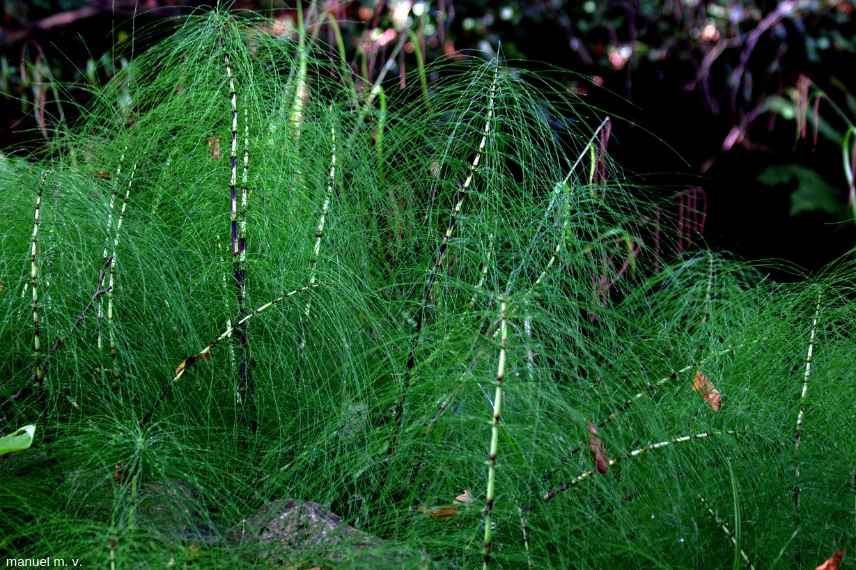
Field horsetail (Equisetum arvense)
Peach varieties resistant to peach leaf curl
Bear in mind that some varieties are less susceptible to this disease than others. So, to reduce the need for repeated treatments, choose varieties known for their resistance such as Amsden (syn. May Flower), Belle de Montélimar, Charles Roux, Madame Girer, Madame Guilloux, Reine des Vergers, Redwing, Roussane de Rodez, Sanguine de Savoie, blood peaches and vine peaches, Morton nectarine… Orion, Alexandra, Sundor or Topaze
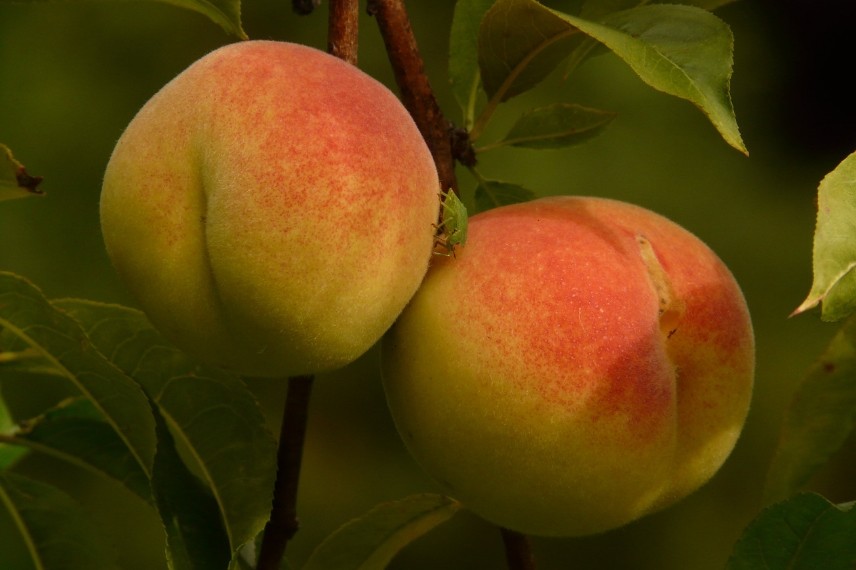
Amsden peaches, a must for resistance to peach leaf curl!
- Subscribe!
- Contents
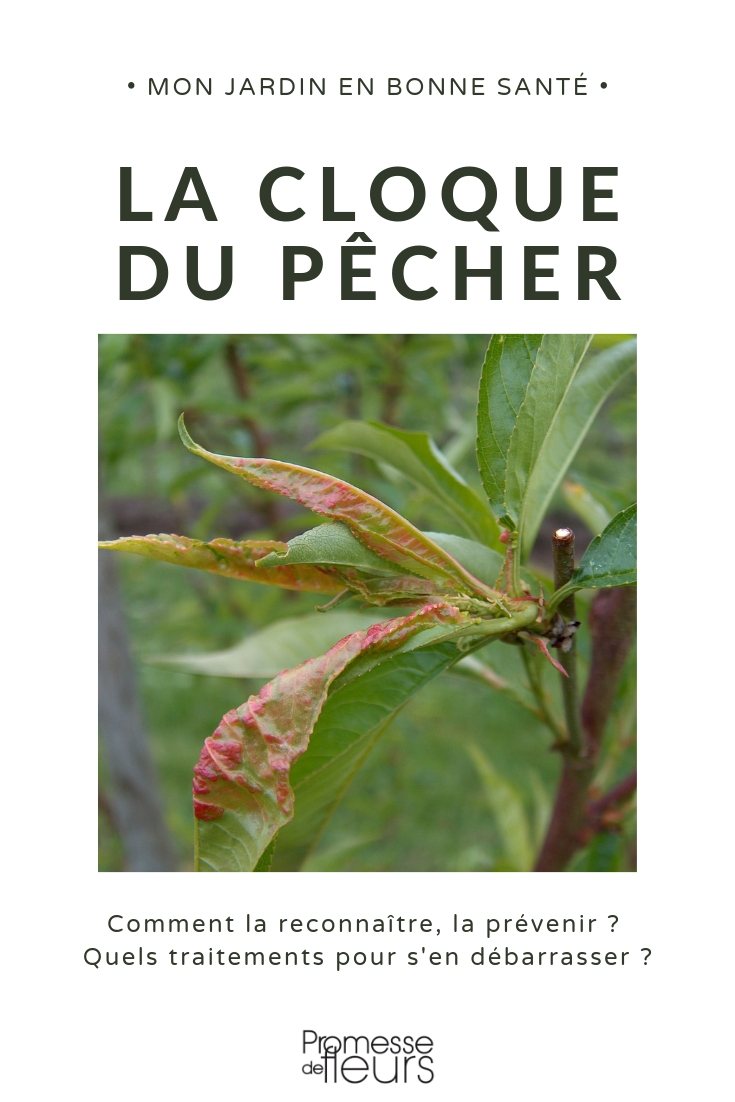































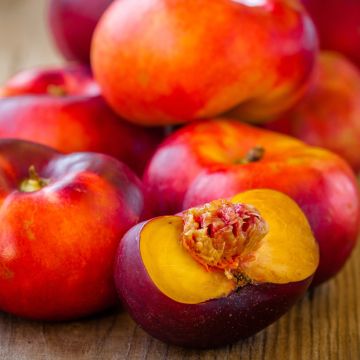
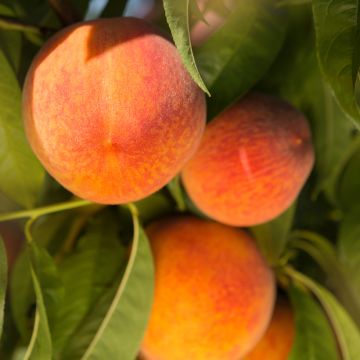
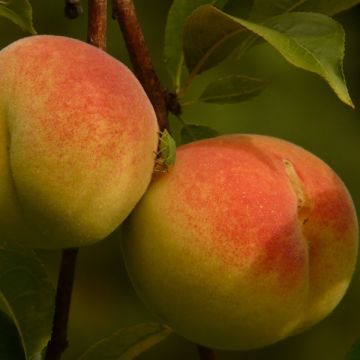
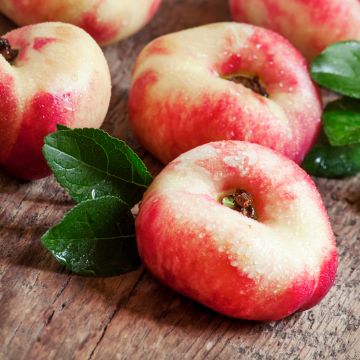
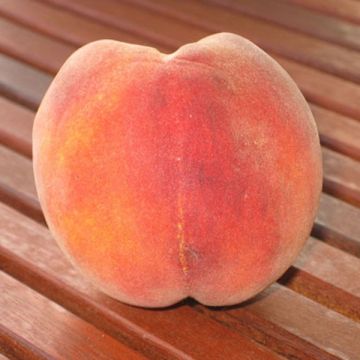
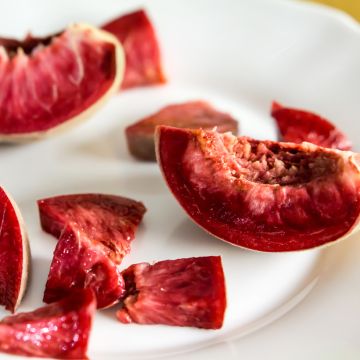
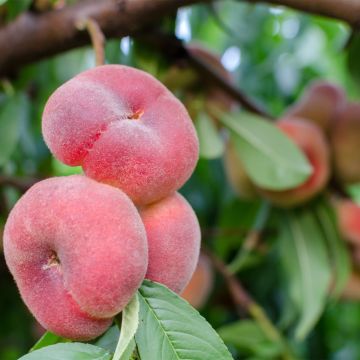
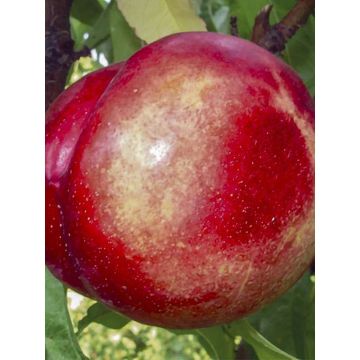
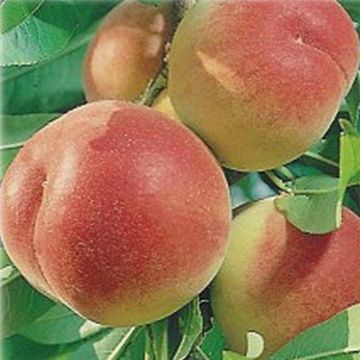

Comments